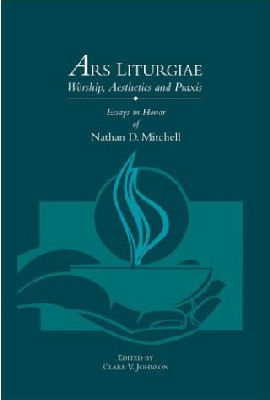
|
Posted November 19, 2007 Book: Ars Liturgiae: Worship, Aesthetics and Praxis Essays in Honor of Nathan D. Mitchell Edited by: Clare V. Johnson Liturgical Training Publication. Chicago, IL. 2003. pp. 269 An Excerpt from the Jacket:
An Excerpt from the Book: Ars Poetica, Ars Liturgia “If every poem is an ars poetica, perhaps it can also be said that every act of public worship is an ars liturgia,” Mitchell has written. But why should liturgists sit at the feet of the poets? What is their art? What is it that they can unveil for us? A poet is one who knows better than any others that: Words strain, Crack and sometimes break, under the burden Under the tension, slip, slide, perish, Decay with imprecision, will not stay in place, Will not stay still. The tools with which poets ply their art are words – most often very ordinary words. But in the mouth of the poet these words no longer sound like ordinary speech. We too easily assume that the words we ordinarily use have fixed and firm meaning and “stay in place,” that ambiguity and imprecision hinder clear communication and are to be avoided at all cost. Our words, we believe, are under the complete control of our thoughts. But poets know that even ordinary words ordinarily will “strain, crack . . . slip . . . will not stay still.” What, then, of words that would dare to speak of deeper realities hidden within and beyond the ordinary? It takes a poet to ask a question we liturgists rarely entertain: “How to say God?” Awake and listening - moonrays drilling the dark – I try to speak: What words can we cry? What sound is given us? Meager alphabet, sounds Warmth of body-language. How to say God? I have fallen In love with the bleeding roots Of his life, and I am shaken And loosened from my sleep. It is late in the year: words In their ripe innocence, burst Around me like seeds. If we don’t hear Their resonance, hear them Clear through with our brain, veins, flesh What about that other name, God? How can it leap alive Out of the womb of dead signs? There is much for liturgists to reflect on here. Poets know instinctively that words spring not so much from carefully reasoned thought, but from other ways of relating things. “Look, see, touch” is the refrain de Vinck sings in her poem. There is a resonance in things, an interconnectedness, a mystery beyond human naming. These things are heard “with brain, veins, flesh” in breathless silence, are known first in the flesh of a vivid image, and the words that name them burst forth in “ripe innocence” before reason can marshal its thoughts. Gathered into poems, such words are more exclamation and song than prose. The art of the poet, then, is to give new voice to such moments of keen awareness and revelation, to subvert what our words ordinarily say. Or better, to re-root our words in that experience out of which they were first born, to let them again become full of the untamable awe, ambiguity and plurisignation originally theirs. Words whose meaning has become desiccated and entombed in tedium of daily speech are brought to life. And in the process our sense of how we, others and God are woven together in a great web of belonging is transformed and given new life. Table of Contents: Worship Home-communion in late antique east Eucharistic reservation and Lutheranism: An extension of the Sunday worship? Catherine Pickstock and Medieval liturgy Mozart and marriage: ritual change in the eighteenth-century Vienna Aethetics Re-attaching tongue to body: the aesthetics of liturgical performance Let the poet speak Spirituality, the imagination and the arts Praxis On the vocation of the preacher Framing the scripture: preaching at the Eucharist on high holy days “Practice makes perfect”: reading as a transformative spiritual practice In the Celtic tradition: Irish Church architecture |
|
